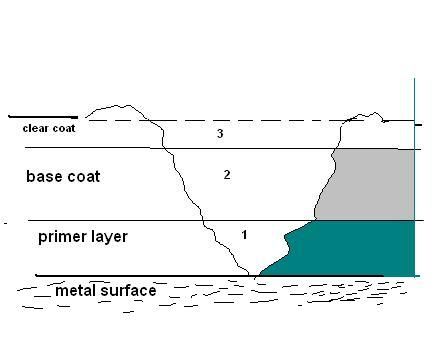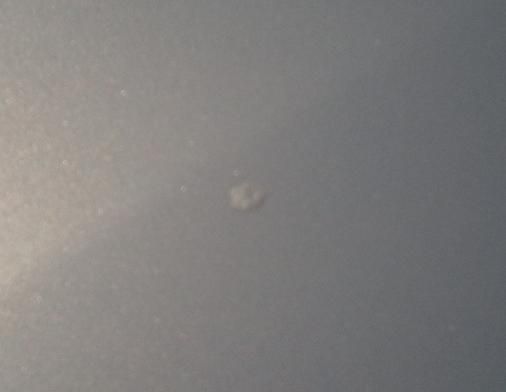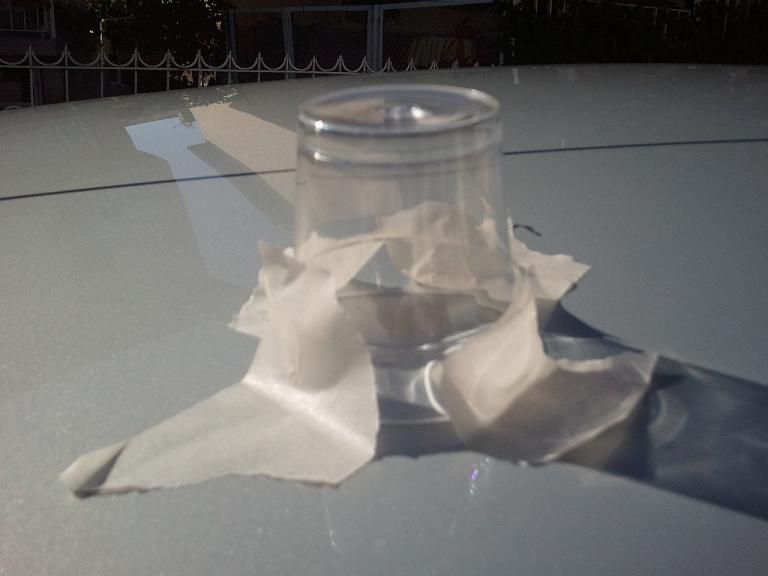all cars , inevitably will have stone chips or scratches..
and if the damage is deep and metal surface can be seen, resulting with rust..
painting whole part is the best solution but not economical.. however you can still get good results that chips and scratches will be hardly seen..

so I wanted to share some of my experiences ..
* STEP 1: first thing to do is learning the correct color code for your car.. they are located on door pillars or above above the radiator -plastic or under the boot... for omega
http://www.youtube.com/watch?v=lwvIRlr-qfQ if you dont use the original color code your success will be limited especially if its metallic because metallic colors tend to show every fault..

so a visit to paint shop with a paint mixing machine is necessary.. if the computer/machine dont have the code mixture info they have to prepare the mixture by trial which is not easy.. besides most codes have many different variants with different mixture amounts..
I recommend you buy minimum 250 grs of paint because color mixture formulas are on a 1 kg basis (here) and if you buy very small portions like 50 grs ,the division of formula gives very small fractions that the machine cant measure and the shop cant weight the drops.. so you will have a distorted color tone..

after the mixture is done if you are not sure of the color tone, you can try it on test cards .. I strongly recommend you prepare/ have it prepared and
checked on a sunny day.. because sunlight is the most strong light that you can distinguish between color tones and see the exact correct tone.. if you are over sensitive there are analysing/measuring machines that shows the color mixture but they are very rare and expensive..
and one warning for touch up color pens: they are not that successful as expected..
other items you will need: primer, primer hardener ( if needed) ,clear coat (laquer), quick hardener (laquer), masking band, very tiny brushes , cleaning thinner (synthetic) , selulosic thinner (buy good quality) , 2000 or 1500 grid sanding paper (and if you have a compressor and a spray gun thats better but not compulsory)
so buy them when you are at the shop..
so assuming you buy the correct color code at correct mixture ratios, we can pass to the next step..
* STEP 2: meteorology (even if you have a garage) .. the day you will work must never be rainy or windy.. especially if you will work outside.. so check meteorology.. when painting , high moisture is very risky.. and any dust will create problems
* STEP 3: clean the area with cleaning thinner and let it dry for few minutes.. aim is to remove polishes and any dirt..

here is the anatomy of paint and the damaged area.. depending on its depth you may need to use also primer if you can see the metal surface or rust..
* STEP 4: carefully examine the paint chip or scratch.. wet sand the sharp edges with 2000 to get a smoother surface.. but not down to base coat or bare metal

aim is to get a flat surface.. and if the chip is very big also make some small scratches inside with 1500.. if there is rust first you need to remove the rust and clean the area completely.. you can also use rust dissolving agents.. but you must also clean them..
* STEP 5: -Primer or base coat- if you will use a spray gun mask the edges of chip or scratch so that you will only fill inside (and also other areas-dont use old newspapers they are very dusty use nylon instead).. you have to apply several layers and need some dry up periods.. masking the area wont be necessary if you will do with brush.. if you will use brush add some celulosic thinner to paint so that your brush wont make traces (start with % 5-10 thinner and make some trials on paper) .. after painting let it dry .. at least an hour (depends on temperature) as the base coat will shrink you will need to apply several layers until the paint level comes very close or equal to clear coat.. in case there is excess wait until its completely dry and sand the excess part..
* STEP 6: apply laquer with brush or spray gun.. let it dry.. and correct the surface by lightly sanding it.. (dont take completely)..
then polish the area..
step 5 and 6 may take more than a day or several days.. but the longer you wait, the more sucessfull you will be.. because paint and laquer dries quickly at the surface but not inside..
here is a filled paint chip (around 4 mms in diameter) , the excess paint will be sanded after dry up.. and laquered

and the dust protection


ps: ask your shop primer and laquer hardener adding ratios.. they are generally 3: 1 (hardener) but may vary..

 Author
Topic: paint chip and scratch repair.. (Read 2190 times)
Author
Topic: paint chip and scratch repair.. (Read 2190 times)

